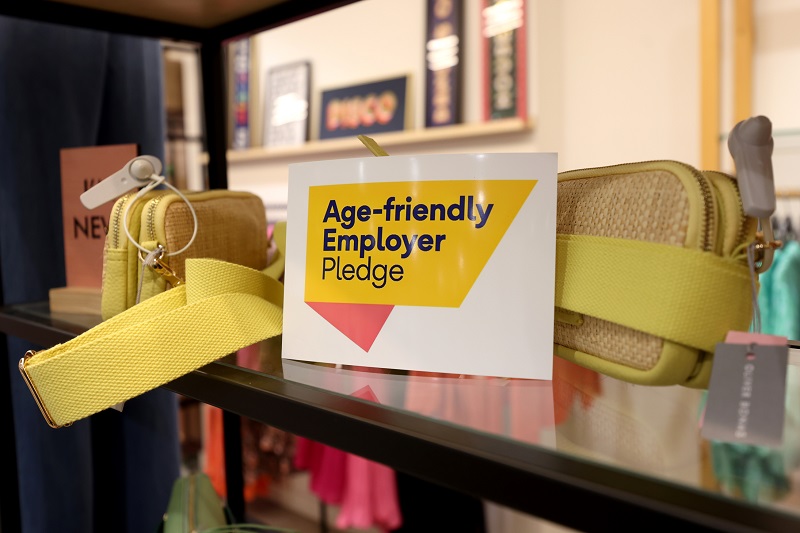We spoke to Gemma about her experience building and delivering successful diversity recruitment strategies and asked her
- How did you build a diverse recruitment strategy for Work180?
- Why is a strategy to deal with unconscious bias so important?
- What do you say to the argument there aren’t enough qualified women for board positions?
- Which strategies don’t work for D&I?
- Why is inclusion so vital to a successful D&I strategy?
- What challenges do you see over the horizon?
Eliminating Unconscious Bias in Recruitment
We eliminated any unconscious bias throughout the recruitment process. Everyone gets the same questions and each question is graded on the same scores. Even the people who I feel might get the job on paper or who I initially meet actually aren’t the ones who ended up getting the job and the person who we hired has been absolutely amazing. So I’m not hiring the woman in her 30s who looks like me, it’s a diverse range of people and it’s worked out really well.
It’s true we do get a lot more females to apply than men, which is actually an issue for me because I want a gender-balanced workforce, but they’re all different in ages and backgrounds and everyone’s got a different reason as to why they applied.
Talent planning
When it comes to the argument that there aren’t enough qualified women at the levels below to get on boards, there definitely needs to be more succession management talent planning to raise women up. But at the same time, typically people have multi-board positions so there are women out there you can tap into to be on multiple boards. Yes, the pool is small but I really don’t think there’s an excuse.
Diversity recruitment strategies that don’t work
I think when companies put out job ads that say “Women only apply”, that sort of stuff, that doesn’t work. I know we’re focused on women, but it’s really just saying, “These are the companies that will support you because there are so many rubbish ones out there, but men can apply [as well].” But as for “Women only”, I just feel like it’s really yuck and it really puts people off. It’s discriminatory to say “Women only apply”.

I think that you need to have a focus on gender balanced shortlists and making sure that you’re assessing an equal pool and use whatever means necessary to make sure you have an equal pool. Make sure you have unbiased recruitment process to get the right people into the roles.
Gemma Lloyd, co-founder of Work180
I do believe in targets and quotas because I think it does give you a focus, but putting a job ad out there that explicitly says “Women only” runs the risk of offending not just men but women as well. I think women naturally find it a bit yucky.
Without inclusion, you won’t have retention
Having a focus on just diversity recruitment strategy and not inclusion, companies really need to make sure that they have their in-house sorted first before they start trying to increase the pool of women.
That’s why we go through the criteria process because we think, yes, you can go and hire a load of women, you can have a job site and put a women-friendly badge on it and maybe get more applications and make more hires, but if you don’t have your in-house sorted then you’re just not gonna have the retention there and the retention’s really important.
Fudging the numbers
We’ve also seen companies do things like say they’ve reached 50/50 gender balance in leadership, but then they’ve measured six levels down from the CEO and you look at the top three levels and it’s all men and it’s like, okay, you’re fudging the numbers a little bit there. I know one of the big banks did this big press release and I actually drilled into some of their government reporting and they only had 37% in the true leadership, not 50/50.
Then I’ve seen other companies create management roles and give women manager titles and tick a box and say “Oh, we have more women in management.” But they have no team or no real budget rights, it’s just a different title that they tick off and isn’t really a diversity recruitment strategy at all.
Gender stereotypes and the STEM gap
I think there are some positives in big upcoming challenges and changes to work like automation because there are a lot more opportunities to work in areas like tech. You utilize more creative skills and emotional intelligence, which I think is going to become more and more important in the workforce rather than hands-on coding skills when you’ve got systems that can already do those things.
But I think one of the big challenges is that with the increasing demand for STEM jobs, which is huge and getting bigger and bigger and bigger, we don’t currently have enough people to fill STEM jobs.
People just aren’t choosing stem as a profession and we really need to focus, particularly on young girls, on breaking down gender stereotypes and realizing what a great career that you can have in areas like tech. Likewise, I think we need to help boys realize that they can be nurses as well and it’s about doing that everywhere.
I think if we could break down the gender role stereotypes that would change a lot, and that’s everything from who’s the main breadwinner to who looks after the home to what do kids play with, trucks or dolls?
See also: Diversifying and embracing geekness
You can read the first interview in this series of three, what is diversity hiring? and more from Work180 on diversity recruitment strategies here.








